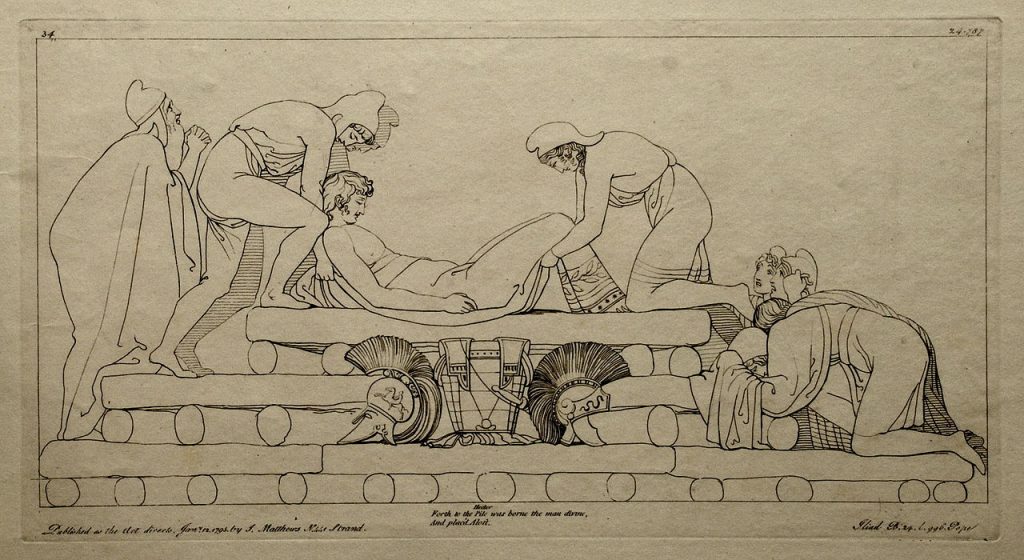
Achilles is “The Best of the Achaeans”[1], and Hector is the best of the Trojans. The Iliad starts with the anger of Achilles, but the last words belong to Hector’s funeral:
Thus, then, did they celebrate the funeral of Hector, tamer of horses.
Iliad 24.804[2]

Achilles will eventually fall in love with an Amazon, Penthesileia, but Hector marries a woman, Andromache, who bears the name of an Amazon: “fighter of men.”

Certainly Achilles, without fighting and killing Hector, his prime enemy, would not obtain the title of The Best of the Achaeans, and his kleos.

We published a Gallery about Achilles last month, so we now are doing one depicting this other hero, Hector.
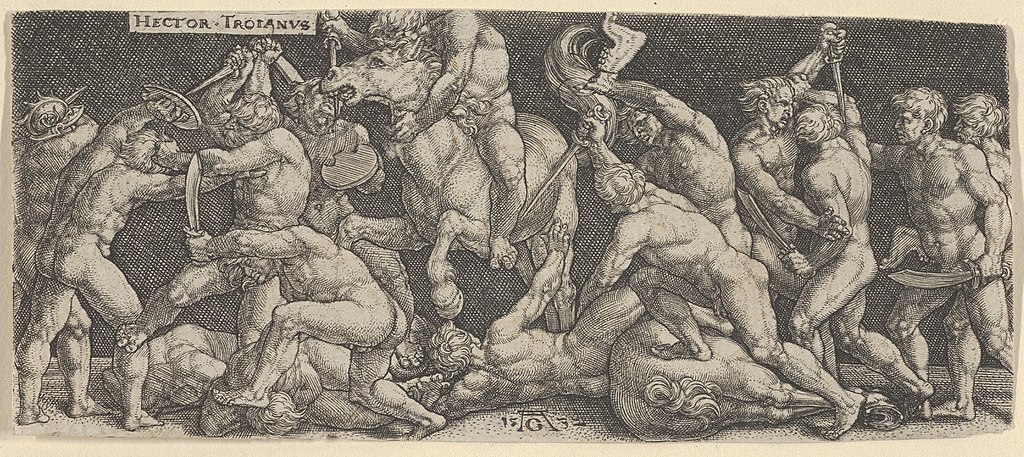
Who is Hector? He has the reputation of a protector of his city Troy and his people. He is also equal to Zeus in mêtis.
Hektor is the only Trojan in the Iliad who is described as ‘equal to Zeus in mêtis’ (Διῒ μῆτιν ἀτάλαντε: Iliad VII 47, XI 200). In the words of Agamemnon himself (Iliad X 47–52), no other Trojan had performed more deeds of mêtis (μητίσασθαι: X 48) against the Achaeans than Hektor. In this respect, then, the function of the hero has a close affinity to Athena, the goddess of mêtis incarnate.
The Best of the Achaeans 8§8

Nagy notes that Hector also wishes he were immortal, and a child of Zeus:
… εἰ γὰρ ἐγὼν ὣς
εἴην ἀθάνατος καὶ ἀγήρως ἤματα πάντα,
If only I were immortal and unaging for all days to come,
Iliad VIII 538–539εἰ γὰρ ἐγὼν οὕτω γε Διὸς πάϊς αἰγιόχοιο
εἴην ἤματα πάντα …
If only I were the child of aegis-bearing Zeus for all days to come
Iliad XIII 825–826Quoted in The Best of the Achaeans 8§11
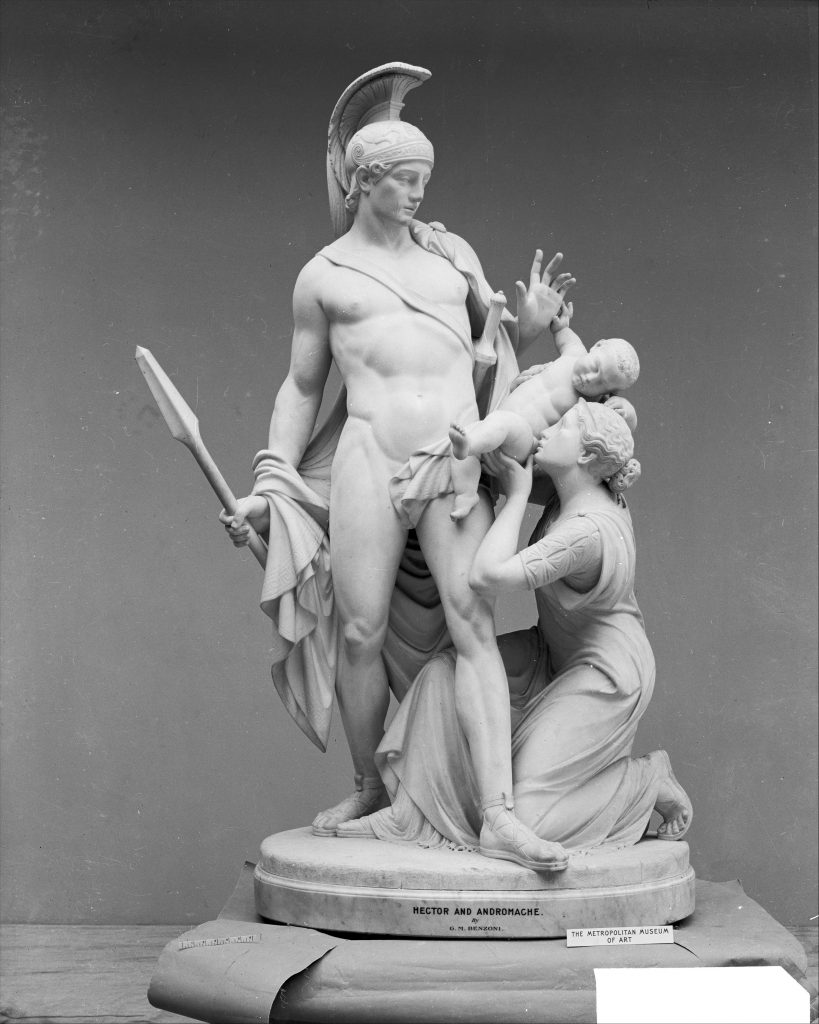
In her book, Experiencing Hektor, Lynn Kozak[3] draws a vivid and realistic portrait of the famous Trojan prince. She recalls that great shining-helmed Hektor, the son of Priam ruled the Trojans, and is described in the Trojan catalogue (Iliad 2.811–3.14):
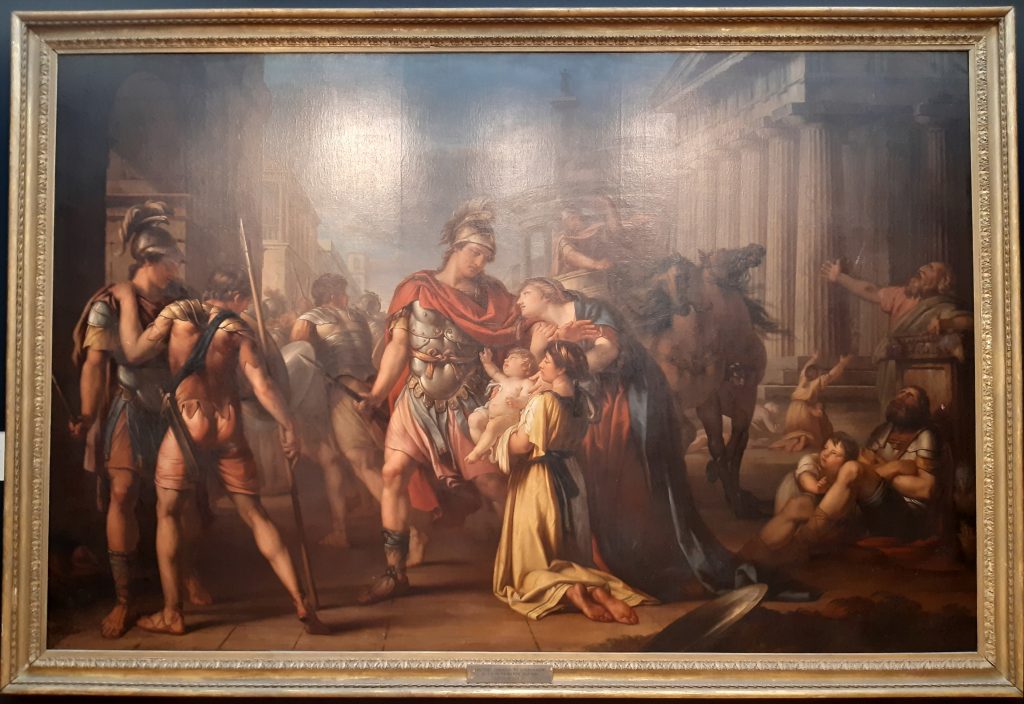
Once the Trojans get into their ranks, the narrative voice catalogues them and their allies. The narrator starts with Hektor, and repeats Hektor’s name and role, adding for the first time new character attributes, and the fact that he is Priam’s son: …
Can you see Hektor? For the first time, the narrator gives physical clues to his appearance, using neutral to positive adjectives/epithets to describe Hektor, focusing on his great size and his shiny helmet. Hektor cuts an imposing figure, and in this anticipation of battle, he is neither the aggressor nor the victim that Achilles and Agamemnon, respectively, painted him as.”
Experiencing Hektor, Chapter 1: “Enter Hektor,” p31.
In this gallery we show Hector the warrior, the husband of Andromache, the father of Astyanax, the protector of Troy, the prince famous for his shining helmet, but also the horrible fate of his body dragged behind Achilles’ chariot.
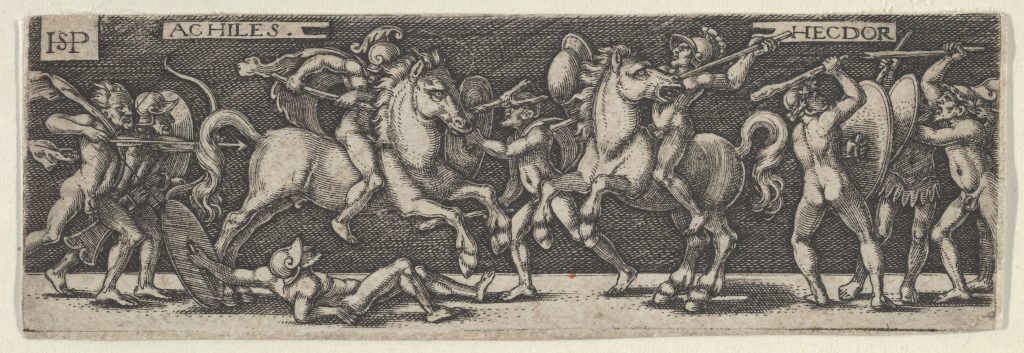
Notes
[1] Nagy, Gregory. 1999. The Best of the Achaeans
Available online at the Center for Hellenic Studies:
https://nrs.harvard.edu/urn-3:hul.ebook:CHS_NagyG.The_Best_of_the_Achaeans.1999
[2] Sourcebook: The Ancient Greek Hero in 24 Hours Sourcebook: Sourcebook of Original Greek Texts Translated into English. Gregory Nagy. 2013.
Available online at the Center for Hellenic Studies:
https://chs.harvard.edu/book/the-ancient-greek-hero-in-24-hours-sourcebook
Homeric Iliad: Samuel Butler’s translation, revised by Timothy Power, Gregory Nagy, Soo-Young Kim, and Kelly McCray.
[3] Kozak, Lynn. 2016. Experiencing Hektor: character in the Iliad. London; New York.
Open access version online:
https://library.oapen.org/handle/20.500.12657/31698
Creative Commons BY-NC-ND 4.0
Image credits
Tommaso Piroli (etching) 1795, from John Flaxman: Funeral of Hector, 1793.
Source: H.-P.Haack, public domain, via Wikimedia Commons
Biagio d’Antonio da Firenze: The Siege of Troy – The Death of Hector. c 1490–1495.
CC-BY-NC-ND, via The Fitzwilliam Museum
Andromache looking down from the walls of Troy at Achilles dragging Hector’s corpse behind his chariot. Limestone, fragment of a sarcophagus, late 2nd century CE. From Reggio di Calabria.
Photo: Jastrow. Public domain, via Wikimedia Commons
Benjamin West: Hector taking leave of Andromache: The Fright of Astyanax. 1766.
Metropolitan Museum: Creative Commons CC0 1.0 Universal Public Domain Dedication, via Wikimedia Commons
Heinrich Aldegrever: Hector Fighting the Greeks. 1532.
Metropolitan Museum: Creative Commons CC0 1.0 Universal Public Domain Dedication, via Wikimedia Commons
Lucy C. Huntington. Hector Taking Leave of His Family. 1810
Public domain, via The Metropolitan Museum of Art
Giovanni Maria Benzoni: Hector and Andromache. 1871.
Public domain, via The Metropolitan Museum of Art
Gavin Hamilton: Hector’s Farewell to Andromache. c 1775.
Photo: Kosmos Society
Sebald Beham: Achilles and Hector. 1518–1830.
Public domain, via The Metropolitan Museum of Art
Images accessed April 2022
Hélène Emeriaud, Janet M. Ozsolak, and Sarah Scott are members of Kosmos Society